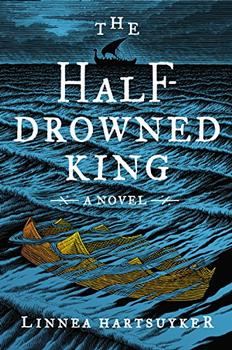Summary | Excerpt | Reading Guide | Reviews | Beyond the book | Read-Alikes | Genres & Themes | Author Bio

Set in Viking Greenland in AD 985, this dramatic historical novel focuses on the intertwined lives of three women straddling the pagan past and Christian future
Katla is a slave and daughter of a Christian woman captured in a Viking raid on Irish shores. Setting sail from Iceland with her master's household, she heads toward the distant promise of a new homestead in Greenland. Also on the ship is Thorbjorg the Seeress, a much maligned and persecuted healer and prophetess who is ever faithful to the call of her patron god, Odin.
Upon first arriving in Greenland, Katla is brutally raped by her master's son, Torvard. The child of this union is Bibrau: taciturn, reclusive, infused with the savagery of her conception and suspected by many to be a changeling. But the seeress Thorbjorg, following a vision from her god, takes Bibrau as her apprentice. The young girl becomes an adept at healing and Norse magic, but her bitterness perverts the wisdom Thorbjorg gives. As her power grows, Bibrau twists it to good or evil at her whim, inflicting her will on Thorbjorg's household, her mother and the tight-knit Greenland community.
The Thrall's Tale is a chronicle of love, hatred and revenge at a turning point in history when Christianity first penetrates the pagan Viking sphere. The schisms, alliances and sacrifices that result reflect the pain of a dying culture and the birth of a different world.
One of the most notable aspects of The Thrall's Tale is the language used. It is as if Lindbergh has scraped away the Latin influences on the English language leaving behind the archaic syntax and vocabulary of the older Anglo-Saxon and Old Norse roots. The result is a moody, dark writing style, positively reeking with atmosphere and foreboding that, once one is used to it, evokes the bleak landscape and tough people to a tee...continued
Full Review
(1068 words)
This review is available to non-members for a limited time. For full access,
become a member today.
(Reviewed by BookBrowse Review Team).
Greenland Then: There is evidence of habitation in Greenland up until about 200 AD, but then the islands appear to have been uninhabited until the Norse settlers from Iceland arrived led by Eric The Red. Around 1200 Inuit from North America migrated southwards and appear to have coexisted peacefully with the Norse. However, by the mid 14th century all signs of habitation by descendants of the Norse had disappeared, possibly due to famine brought on by the "Little Ice Age" (starting in the mid-13th century), possibly by other factors explored in chapters 6-8 of Jared Diamond's Collapse.
Greenland Now: Resettlement of Greenland by the Danes began in the 18th century. In 1953 Greenland was made an equal part of the Danish Kingdom
and in ...
This "beyond the book" feature is available to non-members for a limited time. Join today for full access.

If you liked The Thrall's Tale, try these:

by Linnea Hartsuyker
Published 2018
An exhilarating saga of the Vikings that conjures a brutal, superstitious, and thrilling ninth-century world and the birth of a kingdom - the debut installment in a historical literary trilogy that combines the bold imagination and sweeping narrative power of Game of Thrones, Vikings, and Outlander.

by Paul Kingsnorth
Published 2015
"A work that is as disturbing as it is empathetic, as beautiful as it is riveting." - Eimear McBride, New Statesman